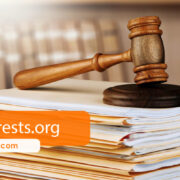Getting your power grid ready before the winter weather rolls in is crucial to making sure service is reliable and there are minimal risks of outages. Harsh winter conditions can include ice, snowstorms, and freezing temperatures, and they put substantial strain on most power infrastructure. The consequences range from equipment failures to blackouts. Infrastructure managers and utility companies should take proactive steps to get ready, and the following are four keys to prepping your power grid for winter.
Table of Contents
1. Conducting Thorough Inspections and Maintenance
Every part of the power grid should have comprehensive inspections regularly with detailed maintenance following up on every issue discovered, potential or otherwise. If you are interested to prepare your power grid, get some essential guides from Edmentum.net. Equipment failures can happen during the winter, and they can cause power outages. Inspecting crucial components should include circuit breakers, substations, transmission lines, and transformers to find weaknesses that might result in service failure when the system is put under duress. Ice buildup can sag transmission lines or break them, and substations need adequate heating, battery checks, and lubrication of their moving parts. Thermal imaging inspections can identify spots that have abnormal heat patterns before expensive repairs happen during cold-weather outages.
2. Formulate an Emergency Response Plan
Even with the best forecasts possible, winter weather always has the potential to surprise you. Disturbances or outages to your grid can happen quickly. It’s essential that you have a comprehensive emergency response plan in place long before winter weather rolls in. You can drastically limit how much impact winter storms have on your grid consumers by responding quickly to outages and restoring power efficiently. In addition to having an emergency response plan, you should update it regularly based on frequent testing. Make sure your staff has the training and resources to deal with many different winter scenarios and institute a clear command chain with corresponding communication protocols. Mutual assistance agreements with any of your neighboring utilities can pool personnel and resources together to complement your own technical preparedness.
3. Utilize Predictive Analytics and Smart Grid Technology
There’s always a chance that winter storms can knock out the power grid, but advances in technology are making systems more reliable. Digital elements can monitor and manage electricity transmission with real-time tracking so you can respond faster to issues. Predictive analytics use historical data in conjunction with weather forecasts to forewarn you about system vulnerabilities and demand surges.
4. Install Weather-Resistant Infrastructure
A big part of safeguarding utility infrastructure is investing in components that are weather-resistant. When feasible, underground power lines are less susceptible to ice, snow, and wind. Overhead lines can utilize de- and anti-icing technologies. Durable equipment, heat-insulating materials, and windbreaks all help substations withstand lower temperatures.
Be Ready for Winter
The winter season is a challenging one for power grid operators. However, proactive steps are possible, including weather-resistant infrastructure, smart grid technologies, emergency response plans, and thorough inspections. By taking these steps, utility companies can manage the risks that come with extreme weather in the coldest months. These actions maintain power grid resiliency in the coming winter and help enhance resilience in the face of future climate challenges.









Comments